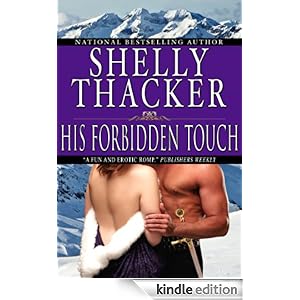Happy Launch Day! Hard Numbers, Day One
Looks like the Kindle Elves were hard at work last night, because I woke up to a nice surprise this morning: my e-book debut His Forbidden Touch is now live on Amazon. I have officially joined the digital revolution. Today is 11-11-11, which I’m choosing to interpret as a sign of good luck, rather than an omen of the end of the world as we know it.
I actually uploaded the book to Amazon and B&N on Tuesday, so the official pub date is 11-8-11. It went live on B&N within 24 hours, but there was a three-day delay at Amazon. Seems they’re being extra-careful about copyright these days: they requested documentation that I own the rights to the book before they would proceed. I was not only happy to comply, I commend them on their caution. We authors take copyright seriously, and I’m glad they do, too.
I’m already enjoying one of the happy differences between being an indie author and being a trad-pubbed author: real-time access to my sales numbers.
When it comes to sales figures, New York publishers treat their authors like mushrooms: keep ’em in the dark and feed ’em a lot of…organic fertilizer. In my trad-pub days, getting sales figures required repeated demands by my agent and months of patience. Even when we did pry loose a number or two from my publisher’s cold, hard grasp, we had no way to verify the accuracy of their figures.
But now I’m an indie. And we indies have live, 24/7 access to our sales figures. No agent required, no months of waiting — and no more manure. One click, and I’ve got my exact sales numbers. I’m already addicted to hovering over that Month-to-Date Unit Sales page and hitting “reload.” I’m hoping the novelty will wear off. Maybe in a week or so. I’ve got books to write.
Meanwhile, I want to share every nitty-gritty twist and turn on this indie road — and that includes hard numbers. So here’s where I’m at on Day One of this new adventure:
Number of titles on sale: 1 book priced @ $3.99
B&N sales: 3
Amazon sales: 3
Total royalties earned so far: $16.15
Twitter followers: 174
Facebook page “likes”: 44
Newsletter subscribers: 10
Hmm, this is hardly what anyone would call a splashy debut. But this isn’t the trad-pub world where an author has to go big or go home. E-books are all about the slow build, the “long tail” of sales over the long haul. Right now, I’m just happy to be back in the game. It’s a genuinely joyous feeling to have my work available for readers again, after years of gathering dust on the bottom shelves of used bookstores. I just have to find ways to help readers find me, one book at a time.
Which reminds me, I need to get back to work on my next book. Right after I go hit “reload” on that Unit Sales page one more time.














